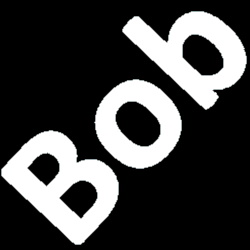Case Study ~ New CMS for Wells Memorial Foundation of Minneapolis
About the organization
According to their mission statement, the Wells Memorial Foundation is:
“… [A] non-profit organization that supports fundamental societal change through innovative and entrepreneurial action”.
My role
My charter was to:
- Maintain their legacy website on Joomla while at the same time …
- … Rebuild the site in WordPress.
The new site went live in June 2017, and a substantial upgrade to the Elgant Theme’s Divi occurred in July 2020.
What was the over-arching goal in creating a new CMS platform?
- Better communicate the foundation’s message.
- Streamline and improve the grant application and decision-making processes.
What were the problems with the "as-is" grant application and disbursement cycle?
- The cycle was a piecemeal, slow, and labor-intensive effort whereby organizations applying for grants would send a cover letter, grant application, and supporting materials to Wells either via email (with attachments) OR via hard copy U.S. mail OR sometimes both.
- The board members (all volunteers) who were tasked with reviewing the grants had to collect these materials, photocopy them, and distribute them amongst themselves.
- The process involved considerable back-and-forth including multiple cycles of email, the clumsy sharing of documents, and trying to keep version control of documents as applicant “scoring” decisions were made.
- At the end of the cycle creating acceptance and rejection letters required an administrator to type in the contact information and other data.
How was WordPress leveraged to address these issues?
I proposed, and the board members embraced, a new approach whereby:
- Organizations applying for grants would going forward do so online through the new WordPress website using the plugin WPForms.
- The online form collected critical data such contact name/title, E-mail, website URL, office/facility address, phone, amount of requested grant, and additional comments.
- In addition the applicants attached soft copy PDFs including cover letter, Minnesota Common Grant form, and any other materials supporting the grant request.
- WPForms was configured to generate an immediate email acknowledgement that the application was received. It also allowed the collected information to be formatted into a spreadsheet with hyperlinks to the PDF attachments.
- This spreadsheet facilitated “at-a-glance” grant evaluation, substantially speeded up the review process, and assured no applicant materials fell through the cracks.
- Furthermore, the contact and address information collected through WPForms made the process of generating acceptance/rejection letters much easier.
- Finally, any data collected via the form could be updated via SQL if, for example, an applicant organization made a mistake of some sort in their initial online entry.
What other factors went considered in seeking out a new CMS?
Above and beyond automating and streamlining the grant-making process there was a desire to:
- Replace Joomla with WordPress so as to provide easier update of content through a more flexible CMS.
- Transfer off of the current hosting service (a local guy working out of his basement) to a more mainstream service.
- Reorganize display of current information.
- Add more modern/current photos.
- Display a complete list of grantees going back several years.
- Maintain a consistent look-and-feel, including fonts, font sizes, hyperlinks, and spacing throughout.
- Improve navigation through tighter and more logical menus along with anchors and jumps
- Strengthen website security.
- Create passworded “private” menus and pages on those menus containing easily-accessible content for use by board members only. Such materials were previously stored in a haphazard manner on Google Drive.
Was there a project plan created for this effort?
Yes — see button below for a redacted version of the project log.
Initially there was some discussion about phasing in chunks of the functionality (i.e., first the website WITHOUT the online form entry and later on the form itself). However, in the end it was decided to deploy both at once owing to the deadline to open up the grant application cycle by July 1.
What kind of documentation was created for the new website?
It was considered easier to create two separate documents — one for users (meaning board members) and a supplemental volume describing the work I as administrator performed. See buttons below for redacted tables of contents for both volumes.
Since launching the website in May 2017 there have been (as of March 2020) around a half dozen updates to each document.
Have there been any enhancements to the original website features?
Early in 2020 online donation functionality was added and along with a privacy policy page. Although Wells mainly disburses funds from a decades-old endowment, it hosts an annual fundraising concert. Previously donations were only possible through writing individual check; this change allows credit card donations.
There was an upgrade to Elegant Themes Divi?
Yes. This conversion effort took about 120 hours. The new site:
- Reflects a more modern, attractive, and open look-and-feel.
- Provides a large home page from which all critical pages can be accessed without navigating through menus.
- Emphasizes the Foundation’s connection to the community through better graphics displayed on — and tighter organization of — the home page.
- Offers more opportunity to share graphics and video.
- Eliminates several plugins.
- Collapses all of the board-specific materials into a single secure “mini-landing page” thereby improving what was previously quite clumsy navigation.
- Allows greater flexibility going forward for swapping in-and-out content on the home page related to the Foundations current activities.

